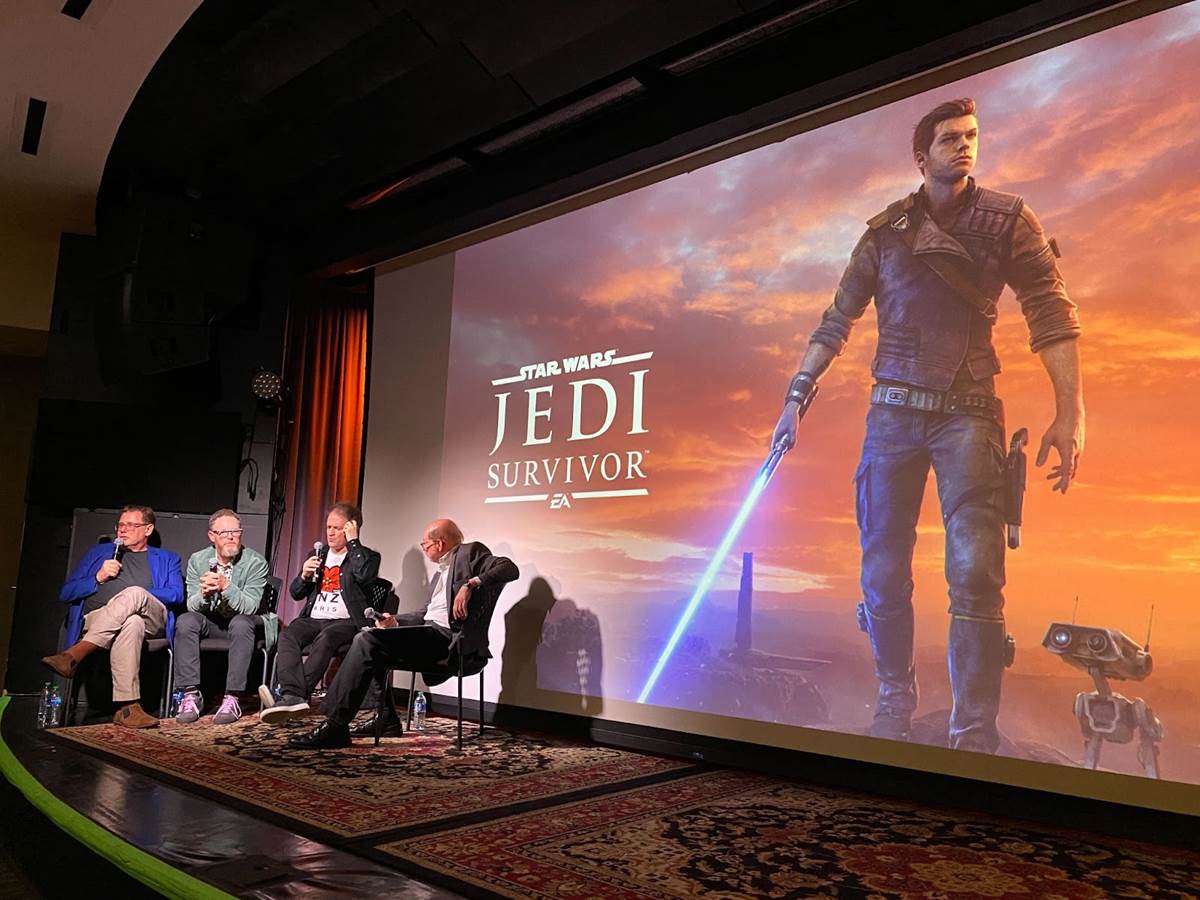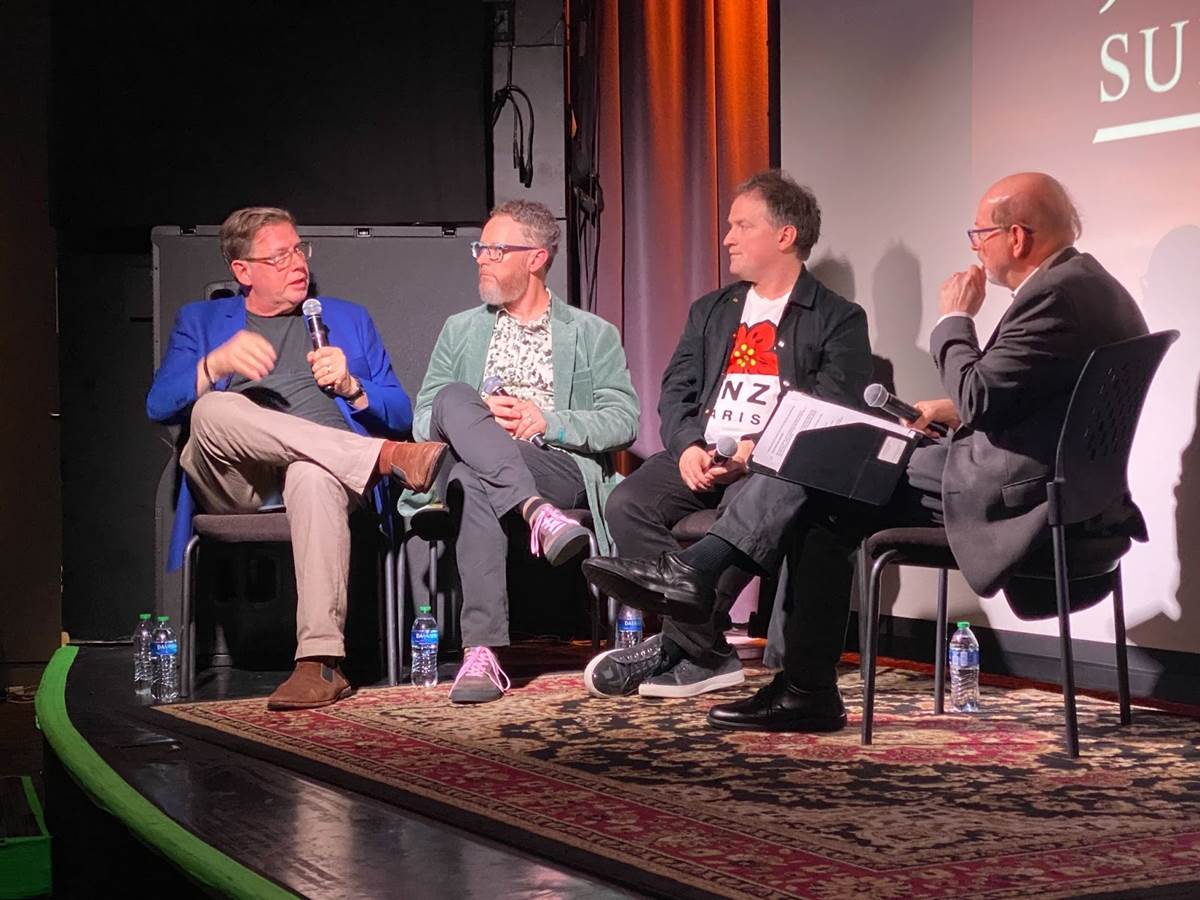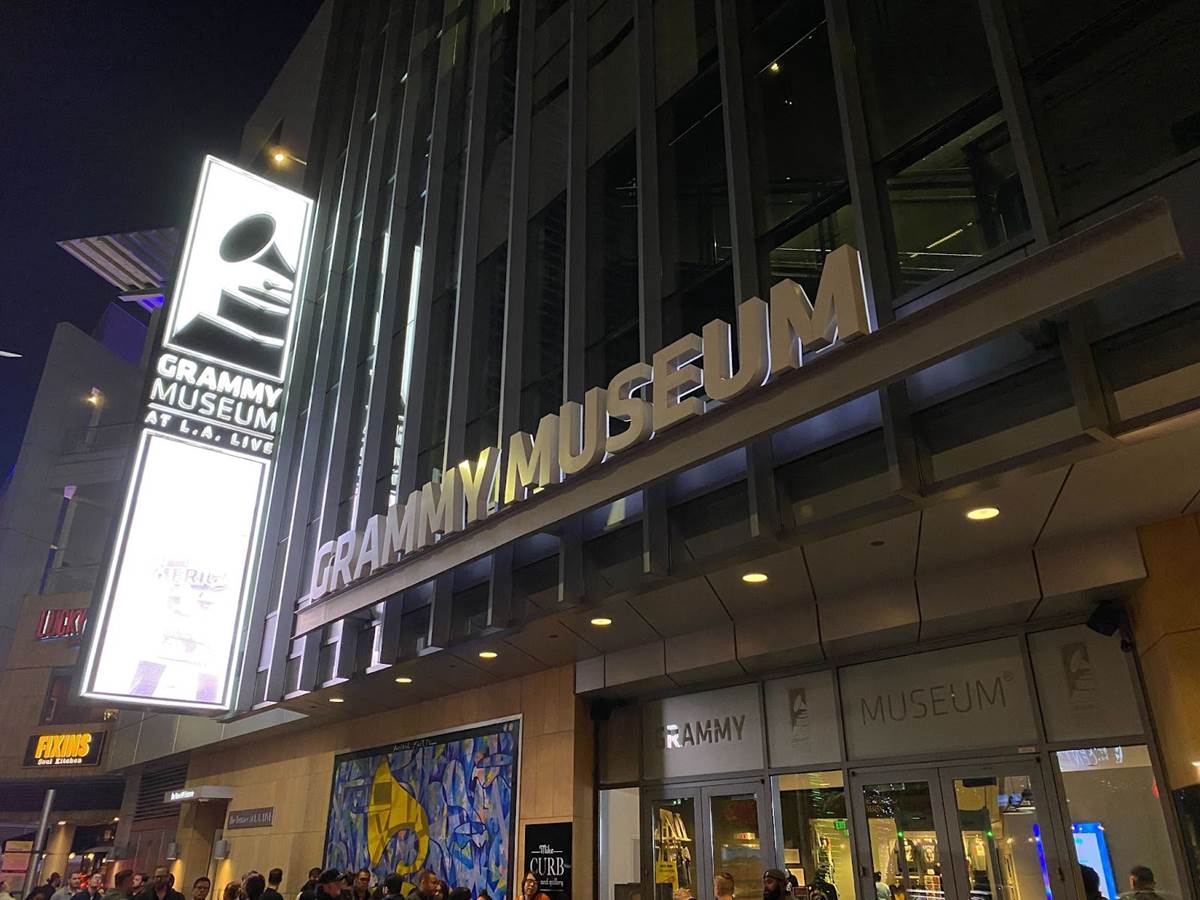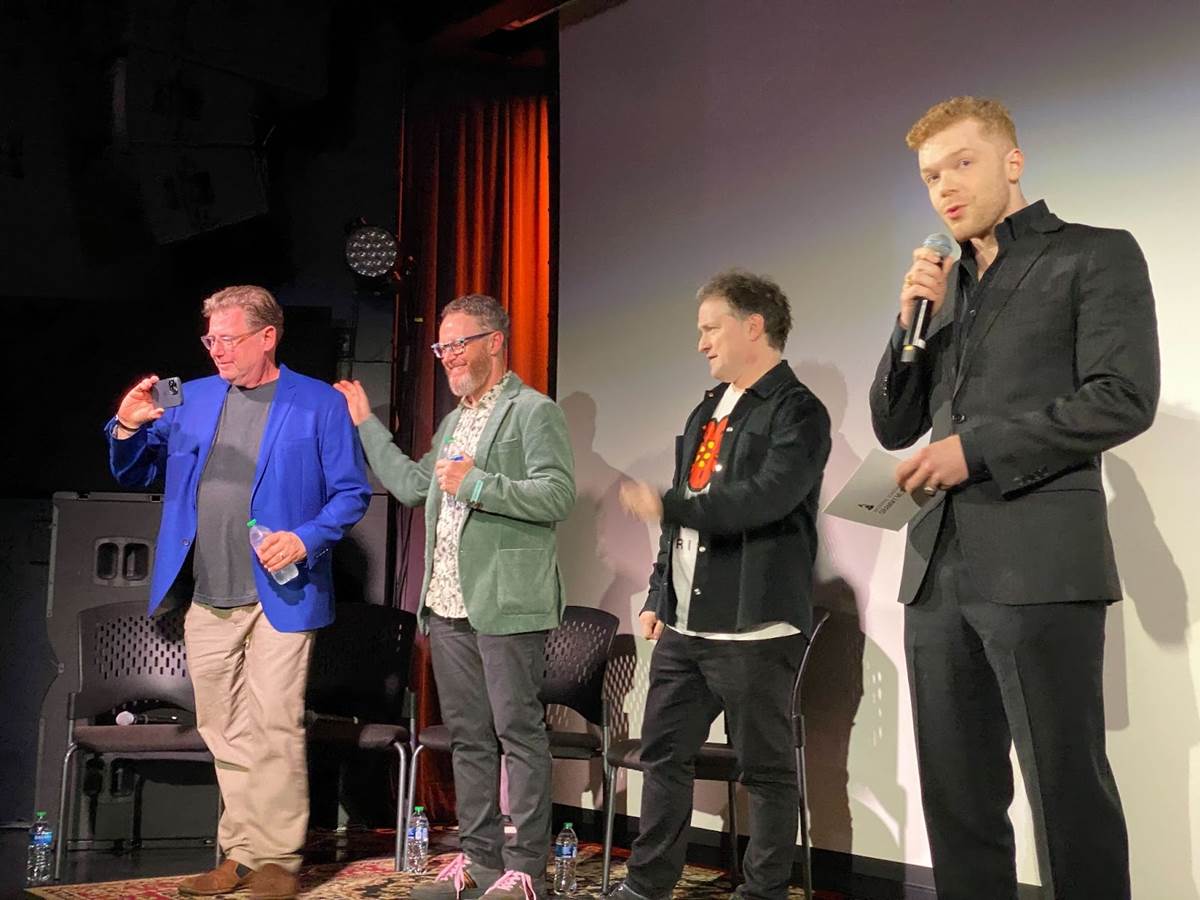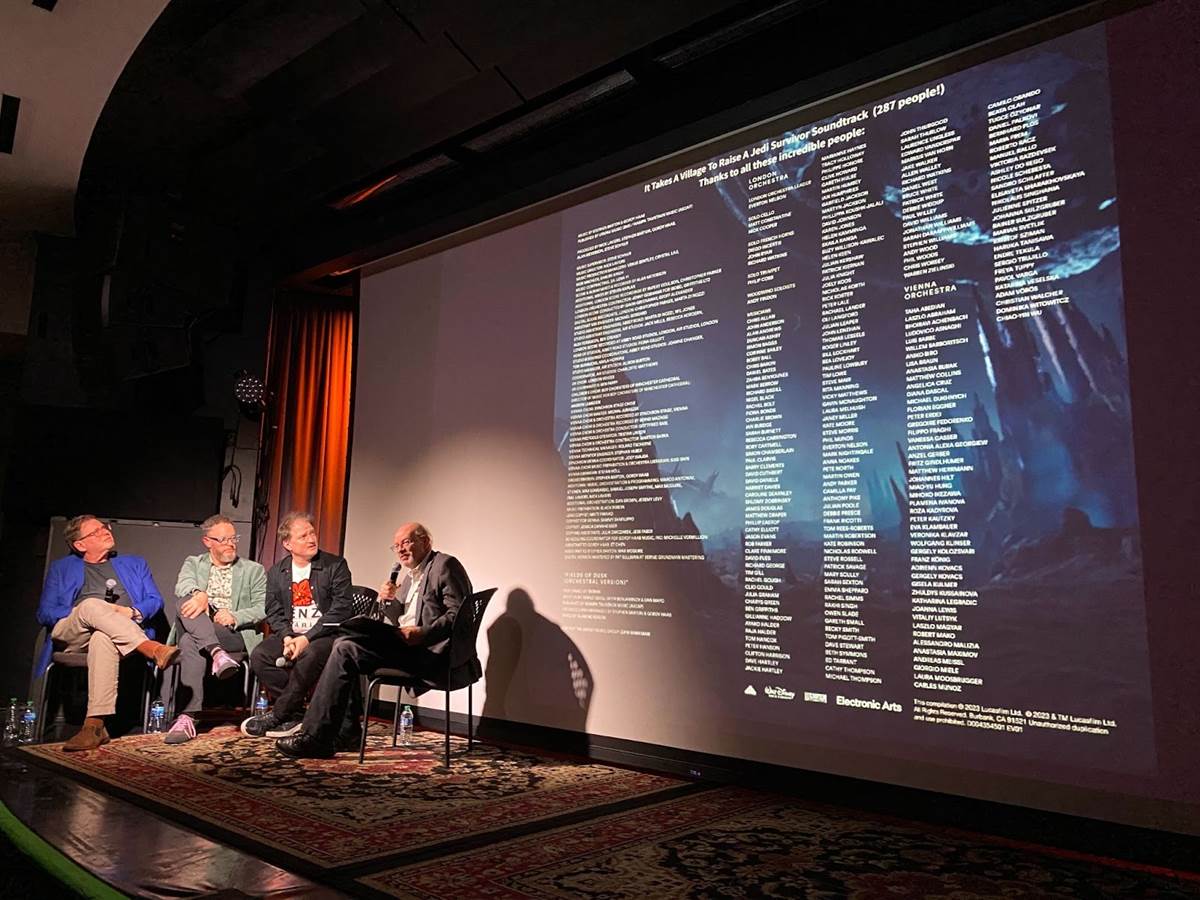Event Recap: Grammy Museum Hosts “Star Wars: Jedi – Survivor” For Your Consideration Panel with Composers
Last week the Grammy Museum in Downtown Los Angeles held a special “For Your Consideration" panel discussion entitled “The Music Behind Star Wars: Jedi - Survivor" and I was lucky enough to be in attendance. Below is my recap of this fascinating chat with some very talented musicians.
Participating in this discussion were Star Wars: Jedi - Survivor composers (and recent Grammy Award nominees) Stephen Barton and Gordy Haab, alongside audio engineer Alan Meyerson. The panel was introduced by surprise attendee– and voice star of the video game best known to fans as his character Jedi Knight Cal Kestis– Cameron Monaghan (Gotham). The chat started off with moderator Jon Burlingame (host of the “For Scores" podcast) asking the participants how they got involved with scoring games, and what the difference is between scoring video games and scoring films. A comparison was made between scoring video games and “dressing someone who’s running" and the process was also likened to the classic “Choose Your Own Adventure" 1980s children’s books. Apparently between EA’s two Star Wars: Jedi video games there are about 16 albums worth of material, for which Barton and Haab composed a new theme for the Empire that was intended to convey the monolithic galactic government from Cal’s unique perspective.
The next section of the discussion turned toward what it was like recording at the iconic Abbey Road Studios in London, where the music for all Star Wars video games over the past decade has been recorded. “It’s a great sounding space," agreed the panel. “It’s complete magic. You can feel all the people who have been there before you. It brings the best out of everybody" Stephen Barton even went so far as to name his own daughter Abbey Rose after the studio. They then went on to talk about the amount of money spent on music for games and the commitment to quality that gamers have come to expect from the franchise. They also discussed the process of scoring a video game, and how the composers usually come in during the script phase and get to see a lot of concept art. For Jedi - Survivor, it took about two years to complete the music, and having worked as a video game tester previously, I thought it was interesting that the composers mentioned the QA department as sometimes having great notes on the music for the game.
The panel discussion was punctuated by a series of video clips from the game and its music, one of which depicted the “Escape from Jedha" portion of gameplay, for which it was said the score “was not easy to write, play, or mix," especially because it features variations that depend on choices the player makes along the way in the game. But the orchestra was up for the challenge, as it was made up of “100 of the greatest musicians on the planet" who it was said “live for challenging music." From there, Barton and Haab talked about their collaborative process and how they came to learn about each other quickly once they started working together. Evidently they have a shared musical aesthetic, fill each other’s creative voids, and tend to pass ideas back and forth, remaining open-minded throughout the process. “Together we made something greater than either of us could have done alone." During the recording sessions for Jedi - Survivor they used a live choir, which brought a human element into the music, and they talked about how amateur choirs are surprisingly often better than professional ones for this type of project.
Barton and Haab also used some unusual musical instruments for this score, such as chimes made out of water bottles, for which they showed a video clip of the bottles hanging from a wardrobe rack and being hit with mallets. They also utilized something called a “prepared piano," which means that objects– in this case sausage-shaped lengths of blue tack putty– were placed into the strings of the instrument to produce more interesting timbres and even make it sound “a little bit broken" and avoid a recognizably honkytonk sound for the planet Koboh. Another clip from the game was called “Where the Nekkos Roam" and the composers described the accompanying music as “Wild West without leaning into Spaghetti Western." They took inspiration from John Williams for this music, but not necessarily from his beloved Star Wars scores– they actually looked toward the legendary composer’s lesser-known work on the 1996 Barry Levinson movie Sleepers. I was also interested to hear that in addition to the live orchestra and choir, Star Wars: Jedi - Survivor also utilized synthesizers in 80% of its score.
Before wrapping up their chat, the composers also delved into the eclectic in-universe music they helped create for the cantina, which was written and recorded by a number of different bands from around the world, including Tatran from Israel. They talked about how video game music has grown up over the years and that composers are now more free to experiment with ideas like this– even going so far as to incorporate themes from Tatran’s music into the score. “Everything we do serves story," the composers said, emphasizing the huge collaboration with the video game’s developers, with whom they were “in constant communication." As for what might come next in the Star Wars: Jedi series, the panelists called Survivor their Empire Strikes Back and joked that “there’s not not plans for a sequel." They couldn’t say much more than that for fear that “Lucasfilm snipers" might be hiding in the back of the theater, but it was enough to glean that more adventures with Cal Kestis and company are likely in the works. Lastly, the panel concluded by putting up a slide with the names of all 287 people who contributed to the Grammy-nominated soundtrack for Star Wars: Jedi - Survivor.
The 66th annual Grammy Awards ceremony will be held on Sunday, February 4th, 2024.



